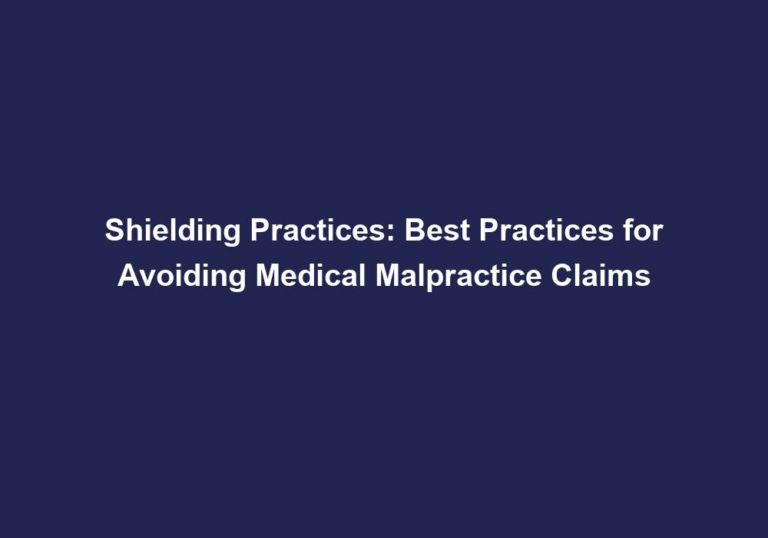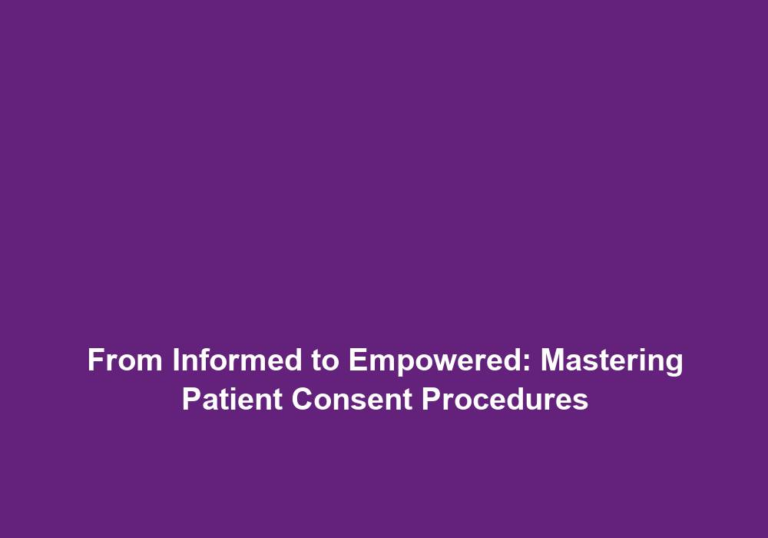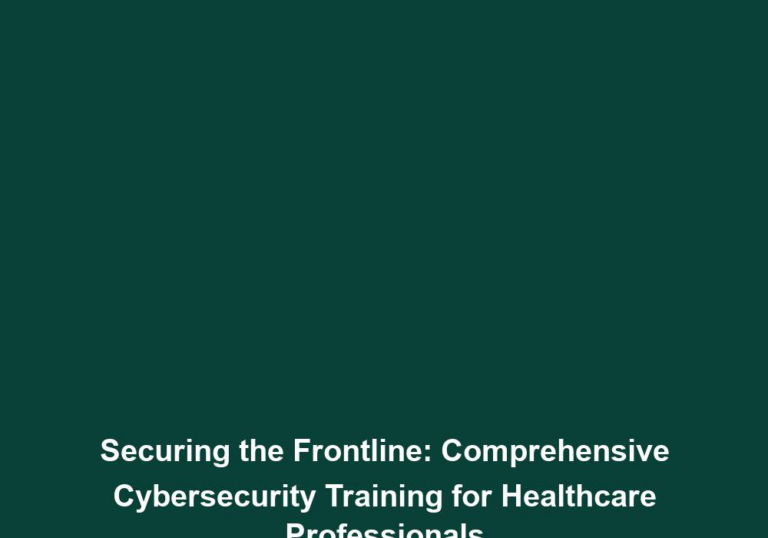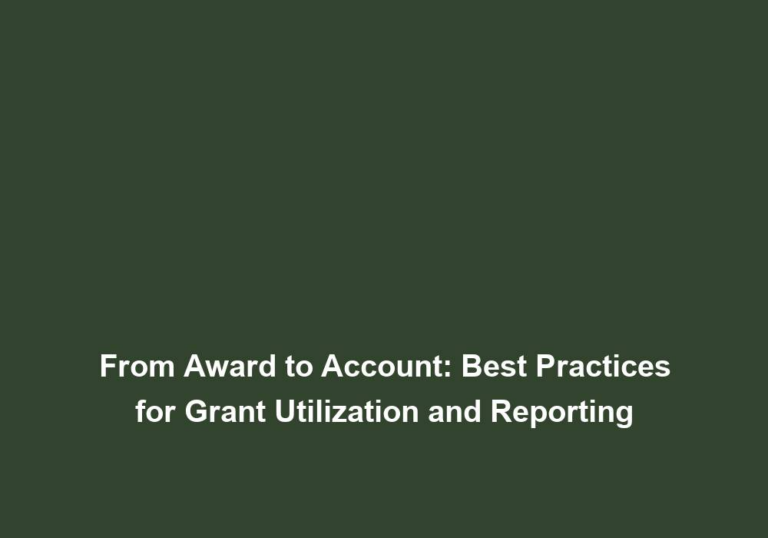A Safe Haven for Health Data: Prioritizing Data Protection and Cybersecurity in Healthcare
In today’s digital age, the healthcare industry is increasingly relying on technology to store, manage, and exchange patient health data. With the advancements in electronic health records (EHRs), telemedicine, and other digital platforms, the need to safeguard sensitive health information has become more critical than ever. With cyber threats on the rise, it is imperative for healthcare organizations to prioritize data protection and cybersecurity to ensure a safe haven for health data.
The Importance of Data Protection in Healthcare
Healthcare data is highly valuable and can be exploited by malicious actors for financial gain, identity theft, or even to disrupt healthcare operations. The consequences of a data breach in the healthcare industry can be devastating, leading to compromised patient privacy, loss of trust, financial losses, and regulatory penalties. Therefore, it is paramount for healthcare organizations to establish robust data protection measures to mitigate these risks.
Regulatory Requirements and Compliance
Regulatory bodies, such as the Health Insurance Portability and Accountability Act (HIPAA) in the United States, have established strict guidelines for the protection of patient health information. Compliance with these regulations is not only a legal requirement but also necessary to ensure patient confidentiality, ethics, and trust.
To comply with HIPAA and other regulations, healthcare organizations must implement comprehensive security measures. These measures include access controls, encryption, secure transmission protocols, and regular security assessments. By adhering to these regulations, healthcare organizations can ensure the protection of patient health data and avoid severe consequences, such as hefty fines and reputational damage.
Protecting Patient Privacy
Patient privacy is a fundamental right, and healthcare organizations have a responsibility to safeguard it. Unauthorized access to patient records can lead to identity theft, insurance fraud, and other malicious activities. By implementing stringent data protection measures, healthcare organizations can significantly reduce the risk of unauthorized access and protect patient privacy.
To protect patient privacy effectively, healthcare organizations should:
-
Implement access controls: Limit access to patient health data to authorized personnel only. This can be achieved through the use of role-based access controls, where employees are granted access based on their job responsibilities.
-
Encrypt sensitive data: Encrypting patient health data ensures that even if it is intercepted, it remains unreadable and unusable to unauthorized individuals.
-
Regularly audit access logs: Regularly reviewing access logs allows healthcare organizations to identify any unauthorized access attempts and take appropriate action.
-
Train employees on data protection best practices: Educating employees on the importance of patient privacy and training them on data protection best practices can help prevent accidental data breaches.
By incorporating these measures, healthcare organizations can create a secure environment for health data and protect patient privacy.
Cybersecurity in Healthcare
Cybersecurity refers to the protection of computer systems and networks from unauthorized access, damage, or disruption. In the healthcare industry, cybersecurity plays a crucial role in ensuring the confidentiality, integrity, and availability of patient health data. Here are some key considerations for healthcare organizations to strengthen their cybersecurity posture:
Risk Assessment and Management
To effectively protect health data, healthcare organizations must conduct regular risk assessments to identify vulnerabilities and potential threats. By assessing the security posture of their systems, organizations can prioritize their resources and efforts to address the most critical risks.
Implementing a risk management framework, such as the National Institute of Standards and Technology (NIST) Cybersecurity Framework, can provide a structured approach to identifying, protecting, detecting, responding to, and recovering from cybersecurity incidents.
Employee Education and Training
Healthcare employees play a vital role in maintaining data security. It is crucial for organizations to provide comprehensive cybersecurity education and training programs to their staff. Employees should be trained on best practices for data protection, identifying potential threats (such as phishing emails or social engineering techniques), and reporting security incidents promptly.
Regular training sessions and simulated phishing exercises can help raise awareness among employees and ensure they remain vigilant against cyber threats.
Secure Infrastructure and Access Controls
Healthcare organizations must employ robust security measures to protect their infrastructure and control access to sensitive data. This includes implementing firewalls, intrusion detection systems, and encryption protocols to secure networks and data transmission.
Furthermore, organizations should implement strict access controls to limit data accessibility to authorized personnel only. Multi-factor authentication, role-based access controls, and regular access reviews can help prevent unauthorized access to patient health data.
Incident Response and Disaster Recovery
Despite all preventative measures, cybersecurity incidents can still occur. It is essential for healthcare organizations to have a well-defined incident response plan in place. This plan should outline the steps to be taken in the event of a security breach, including containment, investigation, notification, and recovery procedures.
Additionally, organizations must establish robust backup and disaster recovery mechanisms to ensure the availability and integrity of health data. Regular backups and testing of recovery procedures can minimize downtime and ensure a quick and efficient restoration process.
Conclusion
In conclusion, safeguarding health data in the digital age is of utmost importance in the healthcare industry. Healthcare organizations must prioritize data protection and cybersecurity to establish a safe haven for patient information. By complying with regulatory requirements, implementing robust security measures, and prioritizing employee education, healthcare organizations can mitigate the risks of data breaches and ensure patient privacy and trust.
Remember, prioritizing data protection and cybersecurity is an ongoing process. Healthcare organizations must stay vigilant, continuously assess their security posture, and adapt to emerging threats to maintain a safe and secure environment for health data.







